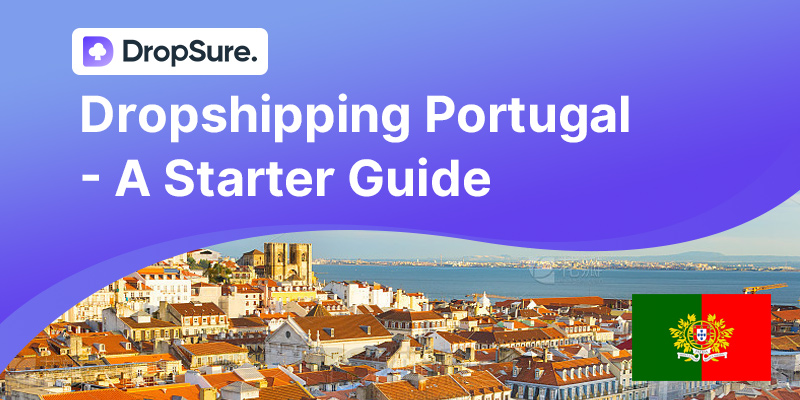You’ve probably heard the saying: “Selling Price = Cost × 2.”
Sounds simple and reasonable, right?
But anyone who’s done dropshipping knows the harsh truth:
If you really follow that formula, there’s only one outcome — the more you sell, the faster you lose money.
This article will break down exactly where your profits are going in the dropshipping model, and guide you step-by-step on how to price your products smartly — so you can avoid falling into the “the more you sell, the more you lose” trap.
The True Cost Structure of Dropshipping
Don’t be naive and think your cost is just the supplier price you see on 1688, AliExpress, or TEMU.
The real cost = product price + international shipping + platform fees + ad spend + refunds & returns + taxes + your own labor or expected profit.
Let’s break it down with a simple example — selling one T-shirt:
| Cost Item | Example (1 T-shirt) |
|---|---|
| Product Cost | ¥20 (AliExpress) |
| International Shipping | ¥15 (ePacket or Yanwen) |
| Platform Fee (Payment) | ¥5 (e.g. PayPal or Shopify transaction fees) |
| Advertising Spend | ¥30 (Facebook Ads) |
| After-sales/Refund Reserve | ¥3 (Estimated based on 10% return rate) |
| Other Fees (domain, CS, etc.) | ¥2 |
| Total Cost | ¥75 |
How to Calculate the “Bottom-line Price”
Many people price like this: “My cost is ¥30, so I sell at ¥60—double up, I’ll always make money, right?”
But this slapdash pricing method in dropshipping is basically slow suicide.
Your real cost isn’t just the product price; it’s the sum of a whole bunch of expenses. If you don’t tally them all up, you’ll fall into the illusion of “looks profitable, but actually losing money.”
Let’s introduce a crucial concept: Bottom-line Price.
• Formula for Bottom-line Price:
Bottom-line Price = Total Cost ÷ (1 – Target Profit Margin)
For example: you want a 30% profit on each order, so Target Profit Margin = 0.3
You worked out your Total Cost is ¥75, so:
Bottom-line Price = 75 ÷ (1 – 0.3) = 75 ÷ 0.7 ≈ ¥107.14
In other words, if you price below ¥107.14, you’re not making money—you’re just working for the ad platforms.
Fee Structures on Different Platforms
Different platforms have very different fee structures and payout systems, so you can’t use a one-size-fits-all pricing strategy. Here’s a summary of common platforms:
| Platform | Fee Structure Description |
|---|---|
| Shopify + Stripe | About 2.9% per transaction + $0.30 fixed fee |
| eBay | Final value fee of around 10%–12%, plus category-specific fees |
| Amazon | Platform commission + FBA fees + other service charges, usually totaling 15%–30% |
| TEMU | Revenue sharing + centralized logistics settlement; very low profit margins but high traffic |
Pro Tip:
Before setting your prices, make sure you thoroughly understand the platform’s fee rules.
Otherwise, you might price a product thinking you’re making money, only to find there’s barely 10% left on paper.
Return & Customer Service Costs
Especially in apparel and electronics, return rates often hit 5%–15%. If you don’t set aside funds for this up front, even if you think you’re making ¥30 per order, after “after-sales” you might end up with nothing.
Example:
Let’s say you net ¥30 profit per order—so 10 orders = ¥300. But with a 10% return rate, you’ll face one return, costing you ¥75 (including shipping, refund, and fees).
Actual profit = ¥300 – ¥75 = ¥225, so your average profit per order drops to ¥22.5, slicing your profit margin by 25%.
Customer service is the same. Even if nobody returns, answering size questions, shipment inquiries, quality concerns, installation help—all eat into your time. If you hire a VA or outsource CS, that’s a fixed cost, too—spread it across every order.
Suggested After-Sales / CS Reserve:
| Category | Suggested Reserve per Order |
|---|---|
| Apparel | ¥3–¥5 |
| High-return items (shoes, electronics, etc.) | ¥7–¥10 |
| Outsourced CS (monthly fee) | Monthly cost ÷ Monthly orders |
Practical Optimization
Many beginners think that once they calculate the “bottom-line price,” pricing is set in stone. But in actual operations, they find conversion rates are too low, ad costs spike, and profits never materialize. The truth is, pricing is never a one-time decision—it’s an ongoing process of optimization and trial-and-error. What you need isn’t a “perfect price,” but a dynamic testing system.
For example, one of the simplest and most effective methods is A/B price testing. Pick two price points (say ¥109 and ¥129), run ads for a few days on each, and observe click-through rate (CTR), conversion rate, and ROAS (Return on Ad Spend). Sometimes the conversion rate is similar, but the higher price yields a better ROAS—this tells you the product is price-insensitive, and you should confidently raise your price to earn higher margins. On the other hand, if clicks tank after a price increase, you’ve hit a price ceiling and need to dial back.
Of course, don’t rely on intuition alone. Build a basic model in Excel or Google Sheets. Make variables out of ad cost, CTR, conversion rate, order volume, return rate, and so on, and run a sensitivity analysis. You might find you’re not underpricing, but simply got wiped out by a one-day ad cost surge. Once you’ve done this, you’ll uncover your break-even range at each price point—and know exactly how to adjust.
More advanced? Build your own dashboard in Google Looker Studio or Notion to monitor key metrics in real time:
• Daily ad spend vs gross profit
• Which SKUs convert best
• Which SKUs are consistently losing money
• Whether customer complaints/returns are spiking for a specific product
This lets you take action before a problem becomes a loss.
Create Perceived Value
Win the Pricing Game
When it comes to pricing, most people first ask: “How do I price it so I don’t lose money?” or “How do I make the most profit?” But real pros know—pricing isn’t just a math problem. It’s a business strategy.
If you can sell at a high price and still get buyers, it’s not because your math is good—it’s because you’ve made it feel worth it.
Make Your Page Feel Premium
If you want higher profit, don’t race to the bottom. Make customers feel like their money is well spent. The easiest first step to raise your price ceiling is to upgrade the quality of your product page. Don’t use cheap, Taobao-style images for a premium product—that just makes you look overpriced. Especially in Western markets, clean white-background shots + detailed close-ups + trust-building elements (e.g. user reviews, guarantees, brand story) can instantly boost perceived value.
Show the Product in Use
Video is your next big asset—ideally with lifestyle context. Don’t just spin the product in circles. Show real people using it. Build a vibe. If you’re selling a thermos, film it at the gym, on an office desk, or at a camping site. Let people imagine “if I use this, my life will be better.” The stronger the emotional connection, the more customers are willing to pay.
Design the Deal Feeling
Now let’s talk sales tactics. Bundling, buy-more-save-more, time-limited discounts—these aren’t just about “lower prices.” They’re about making the customer feel like they’re winning.
A ¥109 product might not sell on its own, but “second item half price” or “buy 2 get free return protection” can boost conversion instantly. Remember: consumer decisions are rarely rational. Give them a reason to feel like now’s a great time to buy.
Emphasize What Makes You Different
If you don’t want to be stuck in a price war, you must differentiate. Focus on:
• Materials (e.g. eco-friendly, organic cotton)
• Original design (e.g. custom illustrations, limited editions)
• Cultural elements (e.g. African tribal motifs, Japanese aesthetics)
Make the product feel like a creation, not just a commodity. When buyers feel they’re purchasing taste or attitude, not just a thing—price stops being the deciding factor.
In short, pricing in dropshipping isn’t a one-and-done deal but an ongoing, data-driven process—and that’s where a Zendrop-style platform like DropSure really shines. DropSure handles your product sourcing and fulfillment while giving you real-time dashboards for ad spend, conversion rates, shipping costs, returns and more. With A/B testing and sensitivity analyses plugged into DropSure’s insights, you’ll pinpoint that sweet spot where your price covers all costs, hits your target margin and still keeps conversions healthy.
And remember—beyond the numbers, it’s your page design, lifestyle videos, smart promotions and product differentiation that make customers feel “this is worth it,” so you never get sucked back into a race to the bottom. Trust the data, test dynamically, lean on DropSure for the heavy lifting—and you’ll master the art of profitable pricing.

 9 min read
9 min read







